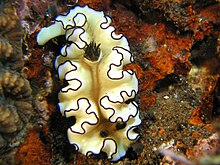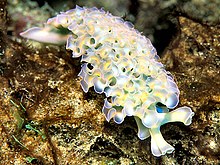... فَاَزَلَّهُمَا الشَّيۡطٰنُ عَنۡهَا فَاَخۡرَجَهُمَا مِمَّا كَانَا فِيۡهِ
But Satan caused them to slip out of it and removed them from that [condition] in which they had been...
— Saheeh International
But Satan caused them to deflect therefrom and expelled them from the (happy) state in which they were; ...
— English Translation (Pickthall)
[Al-Quran 2:36]
...
... فَدَلّٰٮهُمَا بِغُرُوۡرٍ ۚ فَلَمَّا ذَاقَا الشَّجَرَةَ بَدَتۡ لَهُمَا سَوۡءٰتُهُمَا وَطَفِقَا يَخۡصِفٰنِ عَلَيۡهِمَا مِنۡ وَّرَقِ الۡجَـنَّةِ
So he made them fall, through deception. And when they tasted of the tree, their private parts became apparent to them, and they began to fasten together over themselves from the leaves of Paradise. ...
— Saheeh International
Thus did he lead them on with guile. And when they tasted of the tree their shame was manifest to them and they began to hide (by heaping) on themselves some of the leaves of the Garden. ...
— English Translation (Pickthall)
[Al-Quran 7:22 ]
...
يٰبَنِىۡۤ اٰدَمَ قَدۡ اَنۡزَلۡنَا عَلَيۡكُمۡ لِبَاسًا يُّوَارِىۡ سَوۡاٰتِكُمۡ وَرِيۡشًا ؕ وَلِبَاسُ التَّقۡوٰى ۙ ذٰ لِكَ خَيۡرٌ ؕ ذٰ لِكَ مِنۡ اٰيٰتِ اللّٰهِ لَعَلَّهُمۡ يَذَّكَّرُوۡنَ
O children of Adam, We have bestowed upon you clothing to conceal your private parts and as adornment. But the clothing of righteousness - that is best. That is from the signs of Allāh that perhaps they will remember.
— Saheeh International
O Children of Adam! We have revealed unto you raiment to conceal your shame, and splendid vesture, but the raiment of restraint from evil, that is best. This is of the revelations of Allah, that they may remember.
— English Translation (Pickthall)
يٰبَنِىۡۤ اٰدَمَ لَا يَفۡتِنَـنَّكُمُ الشَّيۡطٰنُ كَمَاۤ اَخۡرَجَ اَبَوَيۡكُمۡ مِّنَ الۡجَـنَّةِ يَنۡزِعُ عَنۡهُمَا لِبَاسَهُمَا لِيُرِيَهُمَا سَوۡءاٰتِهِمَا ؕ اِنَّهٗ يَرٰٮكُمۡ هُوَ وَقَبِيۡلُهٗ مِنۡ حَيۡثُ لَا تَرَوۡنَهُمۡ ؕ اِنَّا جَعَلۡنَا الشَّيٰطِيۡنَ اَوۡلِيَآءَ لِلَّذِيۡنَ لَا يُؤۡمِنُوۡنَ
O children of Adam, let not Satan tempt you as he removed your parents from Paradise, stripping them of their clothing1 to show them their private parts. Indeed, he sees you, he and his tribe, from where you do not see them. Indeed, We have made the devils allies to those who do not believe.
— Saheeh International
O Children of Adam! Let not Satan seduce you as he caused your (first) parents to go forth from the Garden and tore off from them their robe (of innocence) that he might manifest their shame to them. Lo! he seeth you, he and his tribe, from whence ye see him not. Lo! We have made the devils protecting friends for those who believe not.
— English Translation (Pickthall)
[Al-Quran 7:26-27]
...
... فَاَكَلَا مِنۡهَا فَبَدَتۡ لَهُمَا سَوۡاٰ تُہُمَا وَطَفِقَا يَخۡصِفٰنِ عَلَيۡهِمَا مِنۡ وَّرَقِ الۡجَـنَّةِ
And they [i.e., Adam and his wife] ate of it, and their private parts became apparent to them, and they began to fasten over themselves from the leaves of Paradise. ...
— Saheeh International
Then they twain ate thereof, so that their shame became apparent unto them, and they began to hide by heaping on themselves some of the leaves of the Garden. ...
— English Translation (Pickthall)
[Al-Quran 20:121]
...
The Quran informs us of what happened to Adam عليه السلام when he disobeyed his Lord ﷻ 's command to stay away from a certain tree in the Garden:
- they slipped out of what they were in
- their original clothing was removed from them
- their 'covered' parts became apparent to them
Observing the common garden snail and slugs, one can see that though they are similar, yet one creature has a shell, and the other doesn't. Both have clothing-less bodies, unlike other animals who are generally clothed in fur, feather, shell, or scales.
Looking up details about snails and slugs, one learns that:
Snail, copied from Wikipedia [as on December 13, 2022]:
A snail is, in loose terms, a shelled gastropod. The name is most often applied to land snails, terrestrial pulmonate gastropodmolluscs. However, the common name snail is also used for most of the members of the molluscan class Gastropoda that have a coiled shell that is large enough for the animal to retract completely into. When the word "snail" is used in this most general sense, it includes not just land snails but also numerous species of sea snails and freshwater snails. Gastropods that naturally lack a shell, or have only an internal shell, are mostly called slugs, and land snails that have only a very small shell (that they cannot retract into) are often called semi-slugs.
Shell, copied from Wikipedia [as on December 13, 2022]
The gastropod shell is part of the body of a gastropod or snail, a kind of mollusc. The shell is an exoskeleton, which protects from predators, mechanical damage, and dehydration, but also serves for muscle attachment and calcium storage. Some gastropods appear shell-less (slugs) but may have a remnant within the mantle, or in some cases the shell is reduced such that the body cannot be retracted within it (semi-slug). Some snails also possess an operculum that seals the opening of the shell, known as the aperture, which provides further protection. ...
Shell layers[edit]
The gastropod shell has three major layers secreted by the mantle. The calcareous central layer, tracum, is typically made of calcium carbonate precipitated into an organic matrix known as conchiolin. The outermost layer is the periostracum which is resistant to abrasion and provides most shell coloration. The body of the snail contacts the innermost smooth layer that may be composed of mother-of-pearl or shell nacre, a dense horizontally packed form of conchiolin, which is layered upon the periostracum as the snail grows.
In the Indian Ocean, three populations of iron-clad sea-snails have been discovered around three volcanic vents:
Scaly-foot gastropod, copied from Wikipedia [as on August 7, 2023]:
Chrysomallon squamiferum, commonly known as the scaly-foot gastropod, scaly-foot snail, sea pangolin, or volcano snail[3][4] is a species of deep-sea hydrothermal-vent snail, a marinegastropod mollusc in the family Peltospiridae.[2] This vent-endemic gastropod is known only from deep-sea hydrothermal vents in the Indian Ocean, where it has been found at depths of about 2,400–2,900 m (1.5–1.8 mi). ...
The shell is of a unique construction, with three layers; the outer layer consists of iron sulphides, the middle layer is equivalent to the organic periostracum found in other gastropods, and the innermost layer is made of aragonite. The foot is also unusual, being armored at the sides with iron-mineralised sclerites....
Devolution of Snails: loss of shell
Scientists believe that the shell is the default state of these creatures. They believe that shell-less creatures, like slugs, lost their shell as part of their evolution, or rather devolution:
Evolutionary changes[edit]
Among proposed roles invoked for the variability of shells during evolution include mechanical stability,[15] defense against predators[16] and climatic selection.[17][18]
The shells of some gastropods have been reduced or partly reduced during their evolution. This reduction can be seen in all slugs, in semi-slugs and in various other marine and non-marine gastropods. Sometimes the reduction of the shell is associated with a predatory way of feeding.
Some taxa lost the coiling of their shell during evolution.[19] According to Dollo's law, it is not possible to regain the coiling of the shell after it is lost. Despite that, there are few genera in the family Calyptraeidae that changed their developmental timing (heterochrony) and gained back (re-evolution) a coiled shell from the previous condition of an uncoiled limpet-like shell.[19]
Sea slug, copied from Wikipedia [as on December 13, 2022]:
Sea slug is a common name for some marine invertebrates with varying levels of resemblance to terrestrial slugs. Most creatures known as sea slugs are gastropods, i.e. they are sea snails (marine gastropod mollusks) that over evolutionary time have either completely lost their shells, or have seemingly lost their shells due to having a greatly reduced or internal shell. The name "sea slug" is most often applied to nudibranchs, as well as to a paraphyletic set of other marine gastropods without obvious shells.[1]
Sea slugs have an enormous variation in body shape, color, and size. Most are partially translucent. The often bright colors of reef-dwelling species implies that these animals are under constant threat of predators, but the color can serve as a warning to other animals of the sea slug's toxic stinging cells (nematocysts) or offensive taste. Like all gastropods, they have small, razor-sharp teeth, called radulas. Most sea slugs have a pair of rhinophores—sensory tentacles used primarily for the sense of smell—on their head, with a small eye at the base of each rhinophore. Many have feathery structures (cerata) on the back, often in a contrasting color, which act as gills. All species of genuine sea slugs have a selected prey animal on which they depend for food, including certain jellyfish, bryozoans, sea anemones, and plankton as well as other species of sea slugs.[2][3]
Sea slugs have brains. For example, Aplysia californica has a brain of about 20,000 nerve cells.[4]
Shell-less marine gastropods[edit]
The name "sea slug" is often applied to numerous different evolutionary lineages of marine gastropod molluscs or sea snails, specifically those gastropods that are either not conchiferous (shell-bearing) or appear not to be.[5] In evolutionary terms, losing the shell altogether, having a small internal shell, or having a shell so small that the soft parts of the animal cannot retract into it, are all features that have evolved many times independently within the class Gastropoda, on land and in the sea; these features often cause a gastropod to be labeled with the common name "slug".
Nudibranchs (clade Nudibranchia) are a large group of marine gastropods that have no shell at all. These may be the most familiar sort of sea slug. Although most nudibranchs are not large, they are often very eye-catching because so many species have brilliant coloration. In addition to nudibranchs, a number of other taxa of marine gastropods (some easily mistaken for nudibranchs) are also often called "sea slugs".[6]
Gastropod groups[edit]
Within the various groups of gastropods that are called "sea slugs", numerous families are within the informal taxonomic group Opisthobranchia:
- The term "sea slug" is perhaps most often applied to nudibranchs, many of which are brightly patterned and conspicuously ornate. For two examples, see the images of Nembrotha aurea and Glossodoris atromarginata within this article.
- The name "sea slug" is also often applied to the sacoglossans (clade Sacoglossa), the so-called sap-sucking or solar-powered sea slugs which are frequently a shade of green.
- Another group of main gastropods that are often labeled as "sea slugs" are the various families of headshield slugs and bubble snails within the clade Cephalaspidea.
- ...
...









No comments:
Post a Comment